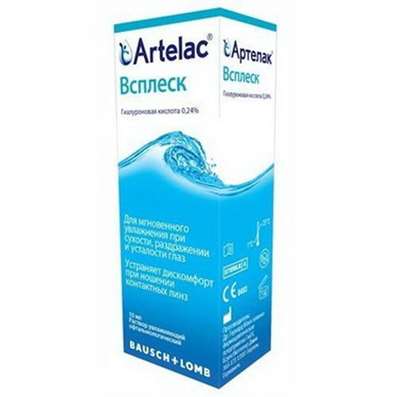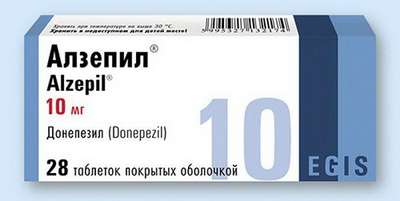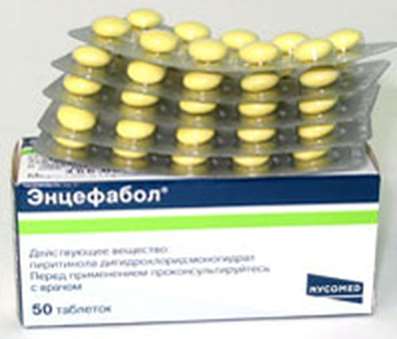Instruction for use: Goserelin (Goserelinum)
I want this, give me price
Chemical name
6- [O- (1,1-Dimethylethyl) -D-serine] -10-deglycinamidorylizing factor of luteinizing hormone (porcine) 2- (aminocarbonyl) hydrazide
Pharmacological group
Hormones of the hypothalamus, pituitary gland, gonadotropins and their antagonists
Antineoplastic hormonal agents and hormone antagonists
Nosological classification (ICD-10)
C50 Malignant neoplasm of breast
Cancer of the nipple and areola of the breast, Breast carcinoma, The hormone-dependent form of recurrent breast cancer in women in menopause, Hormone-dependent breast cancer, Disseminated breast carcinoma, Disseminated Breast Cancer, Malignant breast cancer, Malignant neoplasm of breast, Contralateral breast cancer, Locally advanced or metastatic breast cancer,Locally-distributed breast cancer, Locally-recurring breast cancer, Metastatic breast carcinoma, Metastasis of breast tumors, Metastatic breast carcinoma, Inoperable breast carcinoma, Incompatible breast cancer, Breast cancer in women with metastases, Breast cancer in men with metastases, Breast Cancer, Breast cancer in men, Mammary cancer, Breast cancer with distant metastases, Breast cancer in postmenopausal women, Breast cancer hormone-dependent, Breast cancer with local metastases, Breast cancer with metastases, Breast cancer with regional metastases,Breast cancer with metastases, Common hormone-dependent forms of breast cancer, Common Breast Cancer, Recurrent Breast Cancer, Recurrence of breast tumors, Breast cancer, Estrogen-dependent breast cancer, Estrogen-Dependent Breast Cancer, Disseminated breast cancer with overexpression of HER2, Tumors of the mammary glands
C61 Malignant neoplasm of prostate
Adenocarcinoma of the prostate, Hormone-dependent prostate cancer, Hormone-Resistant Prostate Cancer, Malignant tumor of prostate, Malignant neoplasm of prostate, Carcinoma of the prostate, Locally-distributed non-metastatic prostate cancer, Locally advanced prostate cancer, Locally spread prostate cancer, Metastatic prostatic carcinoma, Metastatic prostate cancer, Metastatic hormone-resistant prostate cancer, Non-metastatic prostate cancer, Incompatible prostate cancer, Prostate Cancer, Prostate cancer, Common prostate cancer, Testosterone-Depot Prostate Cancer
D26 Other benign neoplasms of the uterus
Fibromyoma of the uterus, Myoma, Uterine fibroids, Fibromyoma, Myoma of the uterus, Fibrrios, Meigs syndrome, Tumors of the uterus
N80 Endometriosis
Endometrioid endometriosis
Z31.1 Artificial insemination
Fence of egg, ICSI (Intra Cytoplasmic Sperm Injection), Controlled ovarian stimulation, Controlled superovulation, Controlled superovulation in artificial insemination, Treatment of insemination, Fertilization artificial, Premature ovulation, The IVF program, The program of in vitro fertilization, Superovulation
Code CAS65807-02-5
Characteristics
Antitumor hormone, synthetic decapeptide - analogue of gonadotropin releasing hormone (GnRH). Goserelin acetate is an almost white powder. It is freely soluble in acetic acid, soluble in water; 0.1 M hydrochloric acid; 0.1 M solution of sodium chloride, dimethylformamide, dimethyl sulfoxide. Insoluble in acetone, chloroform, ether. Molecular weight 1269.43 (goserelin), 1328 (goserelin acetate).
Pharmacology
Pharmacological action - antiandrogenic, antitumor.
With initial or intermittent application stimulates the release of the anterior pituitary LH and FSH. With continued long-term use of goserelin inhibits the secretion of LH and FSH. Significantly lowers the serum levels of testosterone in men and estradiol in women, at the beginning of treatment, a temporary increase in their concentrations (usually within the first 7 days) is possible. In men, the testosterone concentration drops to the postastrational level in about 2-4 weeks (3.6 mg) or 21 days after the injection (10.8 mg) and continues to be reduced with constant treatment, conducted every 28 days. In women, the serum estradiol concentration drops by about 21 days after the injection and, with constant treatment every 28 days, remains reduced to a level comparable to that seen in postmenopausal women. In men, the tumor of the prostate gland regresses, and in women - thinning of the endometrium, a decrease in the symptoms and dimensions of volumetric formations (hormone-dependent breast, endometriosis, uterine fibroid). After discontinuation of therapy, the physiological secretion of hormones is restored. Goserelin has a longer action than endogenous GnRH.
Carcinogenicity, mutagenicity, effects on fertility
In experimental studies, it was shown that with the introduction of male and female rats of goserelin acetate rats every 4 weeks for 1 year at doses exceeding the MPD at 31.5 or 62.4 times (males) and at 21.5 or 42.4 Fold (female), an increased incidence of benign pituitary adenoma was detected. Similar doses administered to male rats for 72 weeks and females for 101 weeks also resulted in an increase in the incidence of pituitary adenoma. The significance of these facts for man is not established.
In two-year studies in mice treated with goserelin SC at doses up to 2,400 μg / kg (above MRDT approximately 70 times, in terms of mg / m2 basis) every 3 weeks, it was shown that the incidence of histiocytic sarcomas of the spine and femur increased.
In dog experiments, when doses exceeding the MPDH were 100 times and monkeys were used for 6 months, up to 200 times higher than the MPD, no increase in the incidence of pituitary adenomas was detected; The obtained data suggest a species-specific response.
Mutagenicity. Goserelin did not exhibit mutagenic properties in tests using bacterial and mammalian cell systems to evaluate point mutations and cytogenetic effects.
Pregnancy. Suppression of testosterone secretion leads to impaired fertility. It is not known whether fertility is restored after the abolition of goserelin, but after the abolition of similar analogs, the restoration of fertility occurred.
Studies in rats and rabbits using goserelin at doses approximately equal to or greater than 2 and 20 mg / kg / day (about 1/10 and 2 MPDh, based on mg base / m 2) administered during organogenesis, That goserelin leads to an increase in the frequency of miscarriages, embryotoxicity / fetotoxicity (characterized by increased preimplantation loss, increased resorption, increased umbolic hernia development in rats) at doses ≥10 μg / kg / day (about 1/2 MPDR, mg base / m2) , The effect is dose-dependent. In addition, studies of reproduction have shown that goserelin reduces the survival of fetuses and calves.
After sc administration at a dose of 50 and 1000 mg / kg rats and rabbits, goserelin passes through the placenta.
Bioavailability is high. In the first 8 days after administration, goserelin is released from the depot more slowly than during the rest of the 28-day period between administrations. Binding to plasma proteins is about 30%. Cmax in plasma is reached approximately in 2-3 hours after introduction at men and through 1,5-2 ÷ - at women; After treatment at a dose of 3.6 mg for 2 months, a significant level persists for 12-15 and 22 days, respectively. T1 / 2 - 2.5 h in women and 4.2 h in men, slightly increased in chronic renal failure (correction of the dosing regimen is not required). Does not cumulate.
The use of the substance Goserelin
Goserelin 3.6 mg: hormone-dependent prostate cancer, hormone-dependent breast cancer in women in the reproductive period or perimenopause, endometriosis, the need for preliminary thinning of the endometrium before surgery, fibroids of the uterus (in conjunction with surgical treatment), to suppress the function of the pituitary gland during preparation Stimulation of superovulation within the IVF program (in vitro fertilization).
Goserelin 10.8 mg: hormone-dependent prostate cancer, endometriosis, uterine fibroids.
Contraindications
Hypersensitivity, incl. To other GnRH analogues; Children and adolescence (up to 14 years).
Restrictions for use
Obstruction of the urinary tract (in anamnesis in men), metastases in the spine (risk of compression of the spinal cord as a result of exacerbation of the disease at the beginning of treatment).
pregnancy and lactation
Contraindicated in pregnancy (adequate and strictly controlled studies in humans are not conducted). Goserelin can have harmful embryonic effects when administered to pregnant women. Influence on the reproductive function as a result of antigonadotropic properties of the substance is observed with chronic administration. In women of childbearing age, before starting therapy, pregnancy should be excluded. Women need to use non-hormonal methods for contraception during treatment with goserelin and for 12 weeks after it is discontinued. If goserelin is used during pregnancy or if pregnancy occurs with goserelin therapy, the patient should be warned about the potential harm to the fetus and the risk of spontaneous miscarriage.
At the time of treatment, breastfeeding should be stopped (it is not known whether goserelin penetrates the breast milk of women, but it is known that goserelin is excreted into the milk of lactating rats).
Side effects
From the nervous system and sensory organs: dizziness, headache, sleep disturbance, excessive fatigue or weakness, anxiety, depression, paresthesia, impaired cerebral circulation.
From the side of the cardiovascular system and blood (hematopoiesis, hemostasis): the lability of blood pressure, increased blood pressure, arrhythmia, myocardial infarction, occlusive disorders of peripheral circulation (pain or coldness of the hands and feet), aggravation of chronic heart failure (swelling of the feet, ankles), anemia .
On the part of the respiratory system: exacerbation of COPD, infection of the upper respiratory tract.
On the part of the digestive system: a decrease in appetite, nausea, vomiting, constipation or diarrhea.
Allergic reactions: skin rash, anaphylactoid reactions.
Other: exacerbation of symptoms of breast cancer, weight gain, hypercalcemia (in patients with bone metastases), gout (joint pain), increased sweating, hot flashes; In men - obstruction of the urinary tract, syndrome of compression of the spinal cord, decreased potency, gynecomastia; Women - dryness of the vaginal mucosa, hot flashes, mood lability, decreased libido, menopause, amenorrhea (after the abolition of the treatment for the resumption of menstruation may not occur), spotting (at the beginning of treatment), ovarian cyst formation, decreased bone density and bone mass.
Routes of administration
PC.
Precautions
Patients receiving goserelin should be under medical supervision. In connection with an increase in the frequency of exacerbation of the disease due to an increase in the concentration of testosterone in the blood, the appearance of obstruction of the urinary tract and compression of the spinal cord in the presence of metastases, it is necessary to conduct systematic monitoring of the condition during the first month of therapy, including the serum concentration of testosterone, antigen of the prostate gland, Phosphatase.
Pain in the bones with a temporary sudden exacerbation of the disease can be treated symptomatically. The compression of the spinal cord or kidney failure due to obstruction of the ureter should be treated in a conventional way. In extreme cases, you should resort to orchiectomy.
Repeated courses for benign gynecological diseases are not recommended because of the high probability of osteoporosis. After the abolition of therapy, progressive restoration of bone density is possible.
Against the background of treatment, the cervix tone increases, and difficulties may arise with the expansion of the cervix.
With caution use goserelin 3.6 mg with IVF in patients with polycystic ovary syndrome, tk. It is possible to stimulate a large number of follicles.

 Cart
Cart





